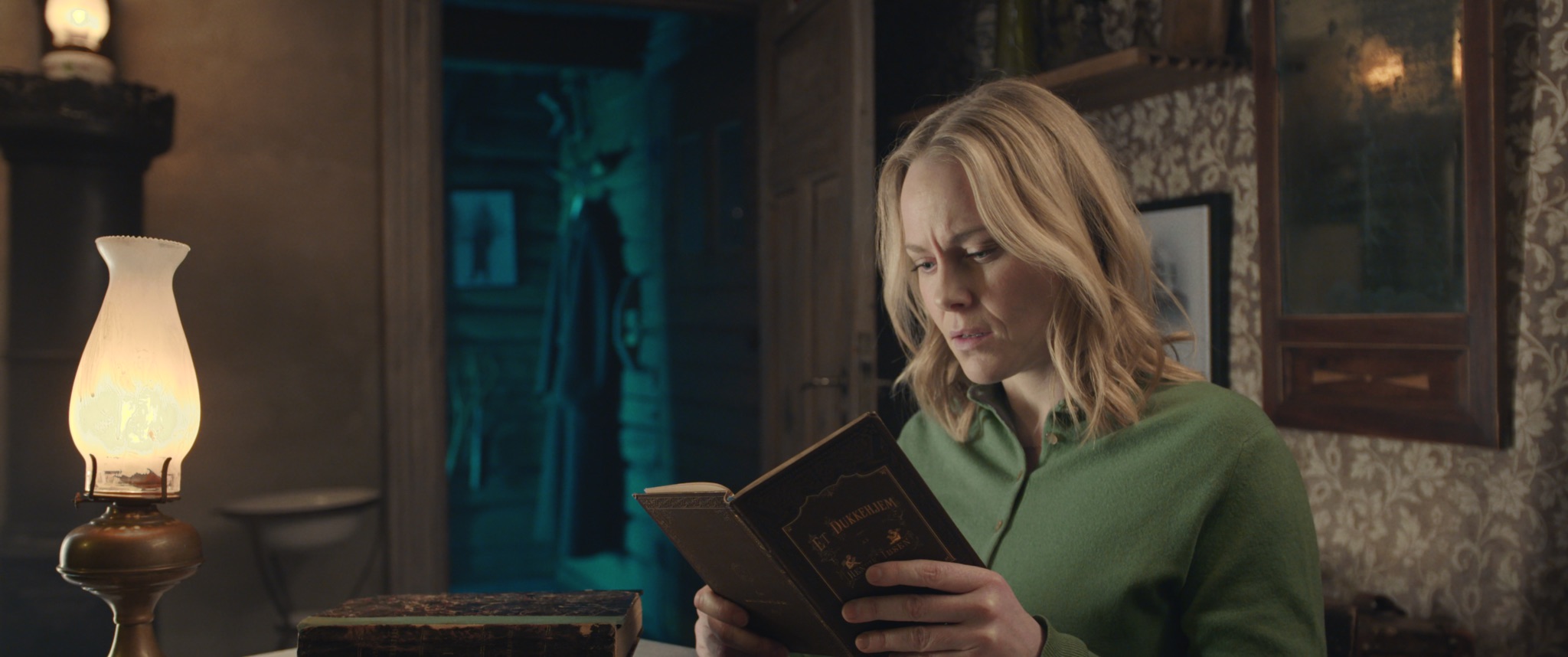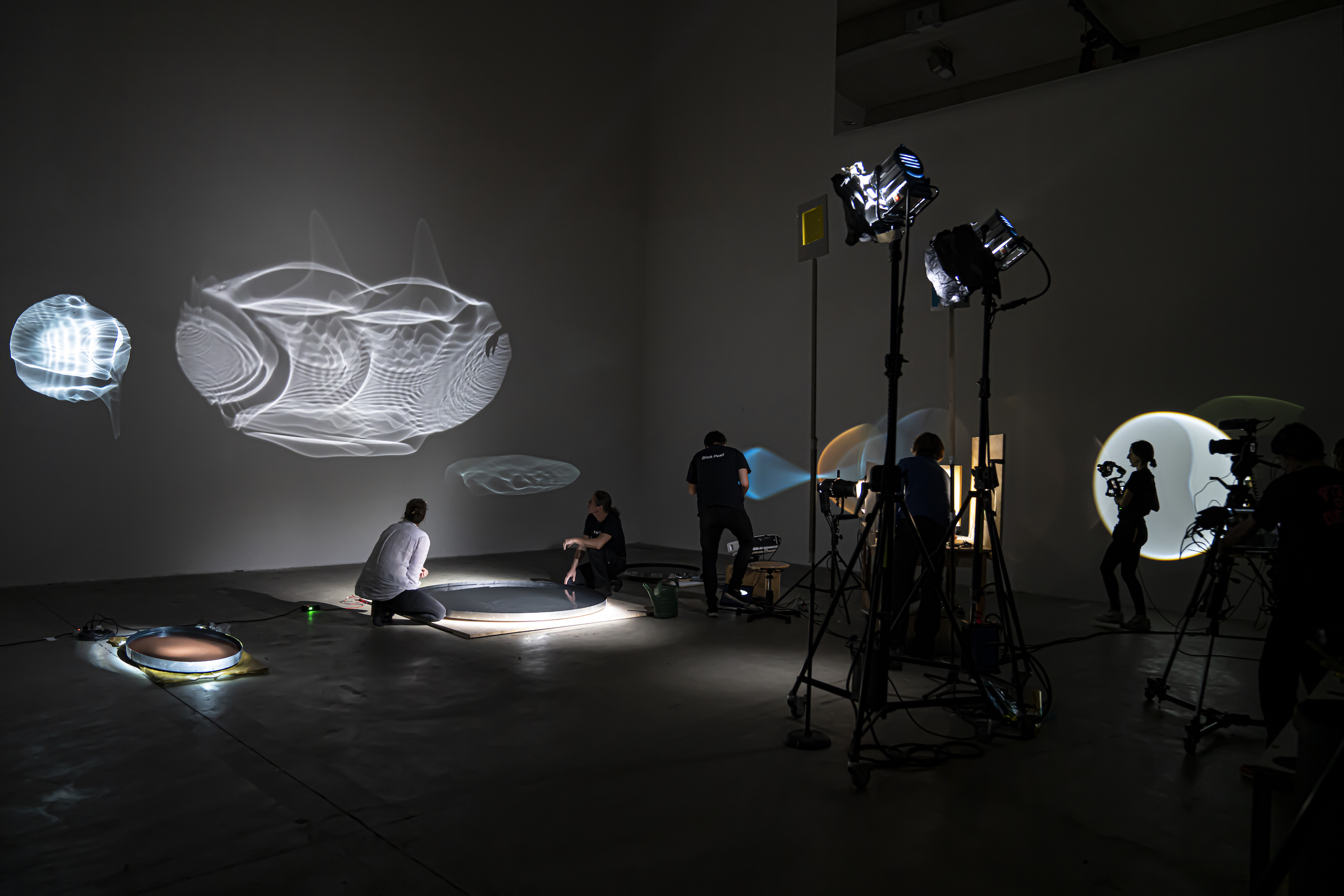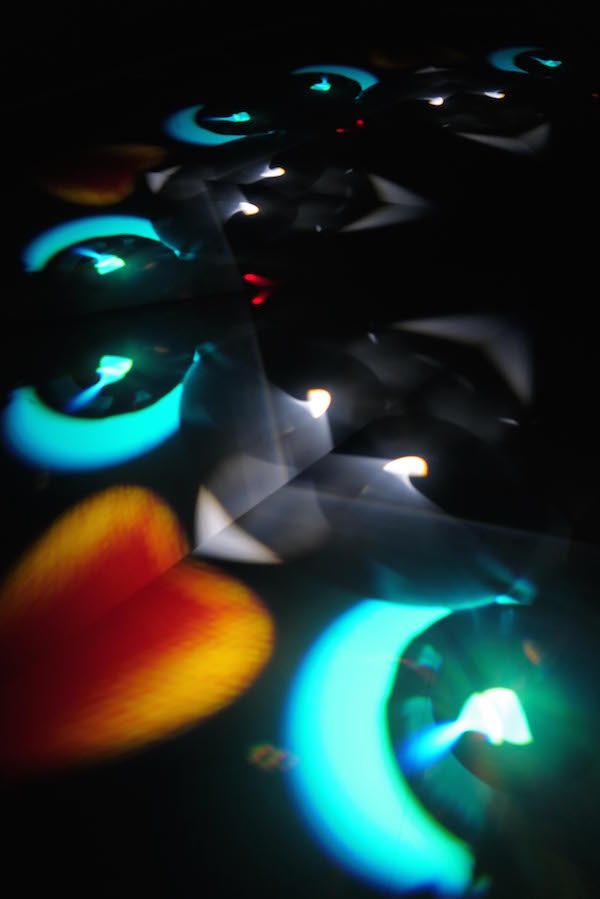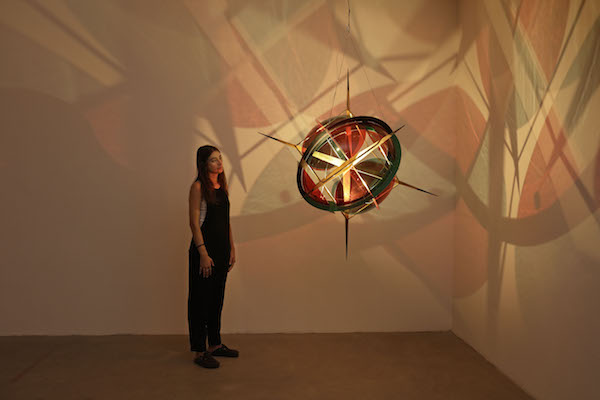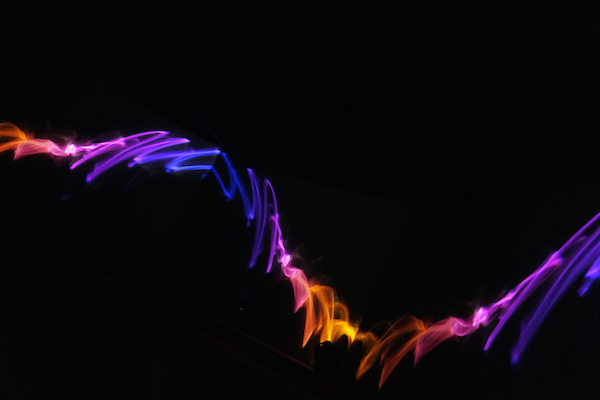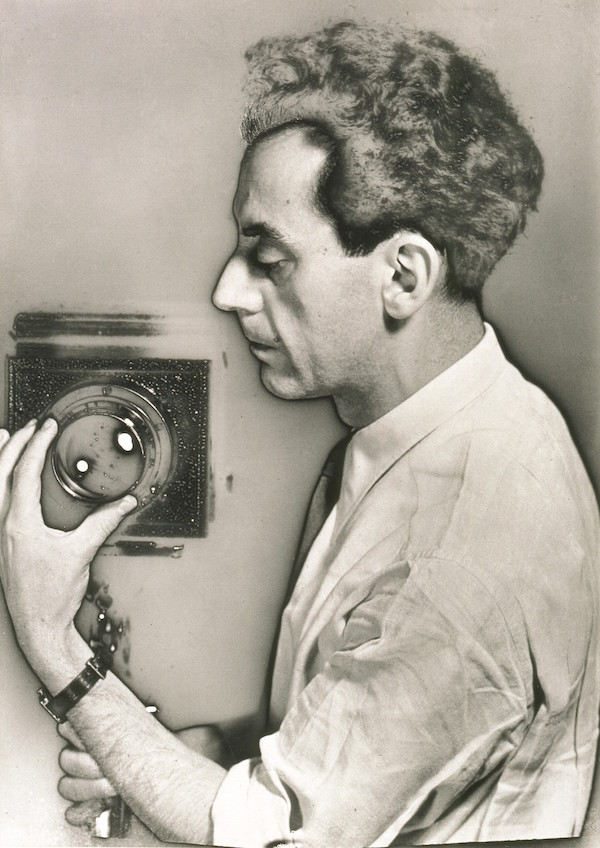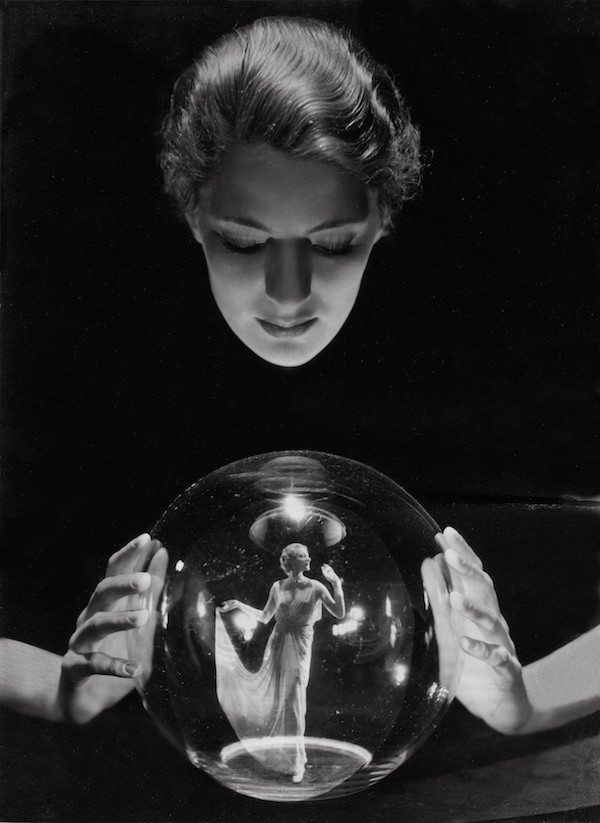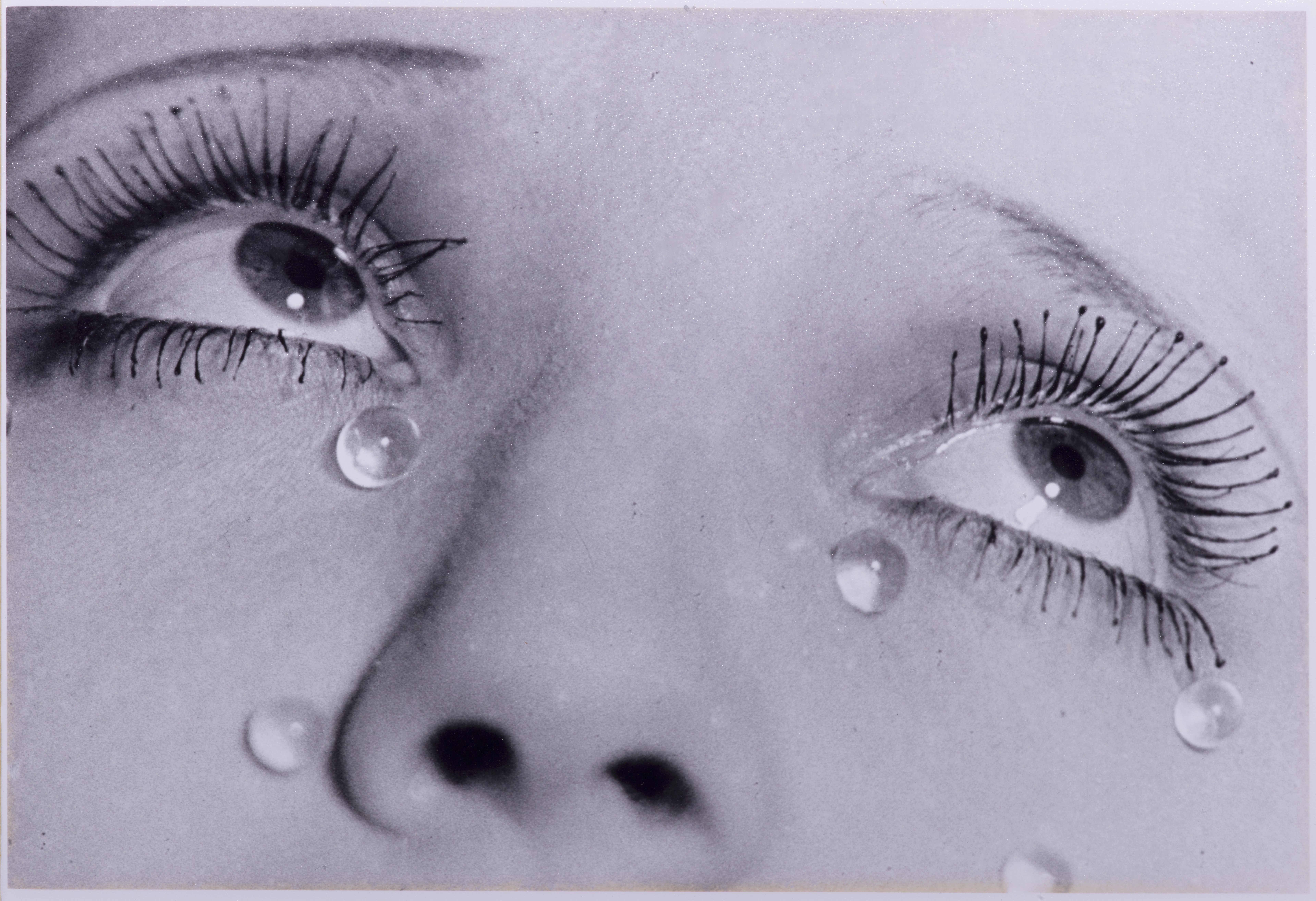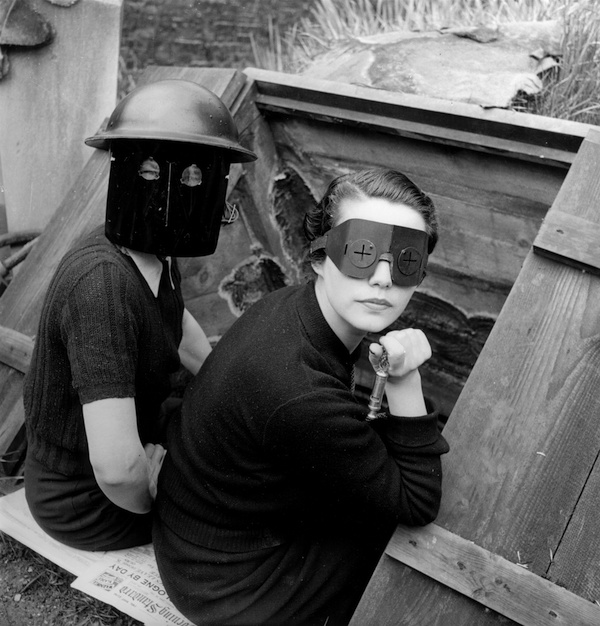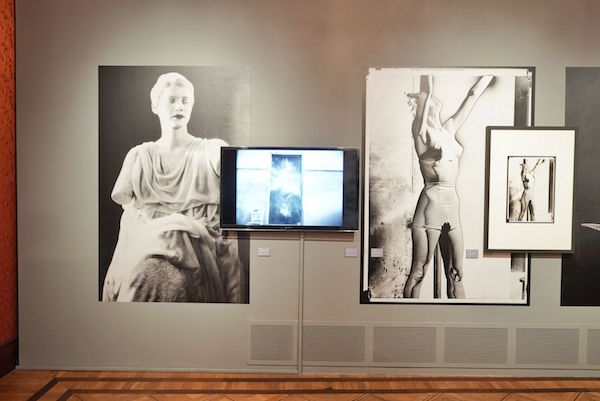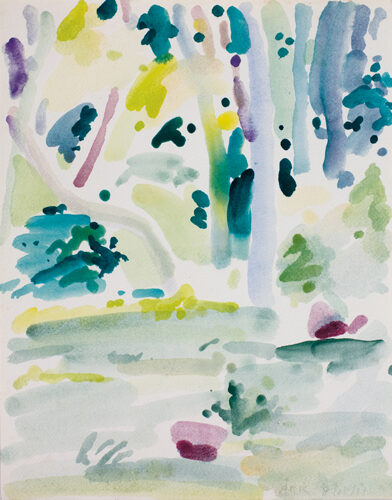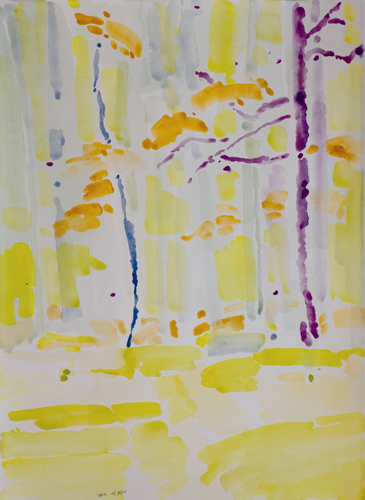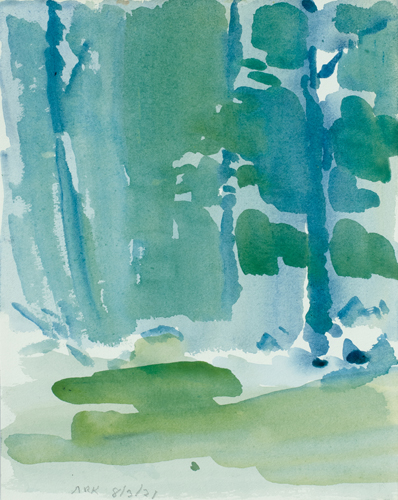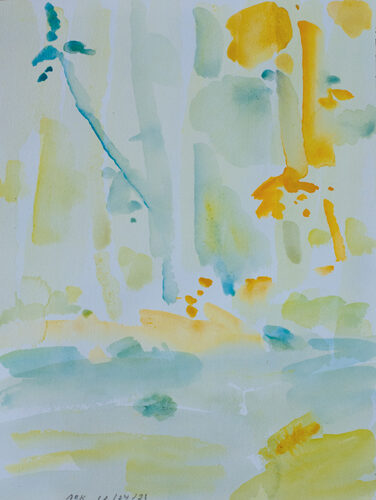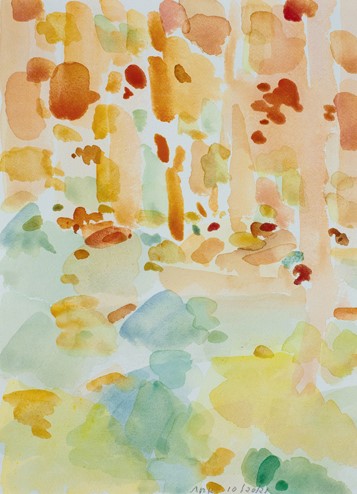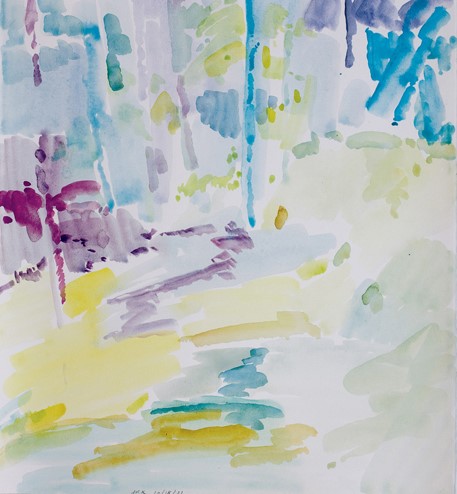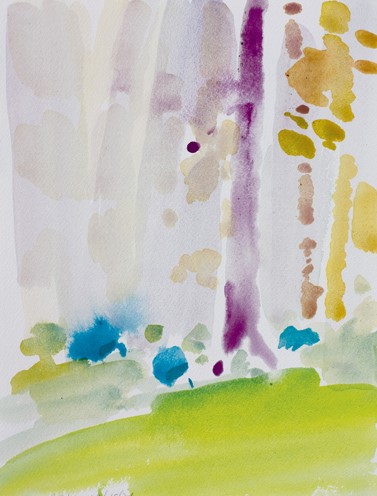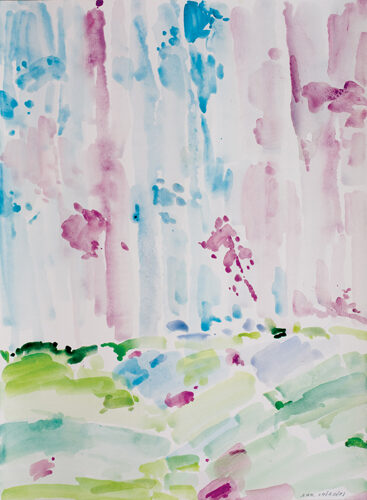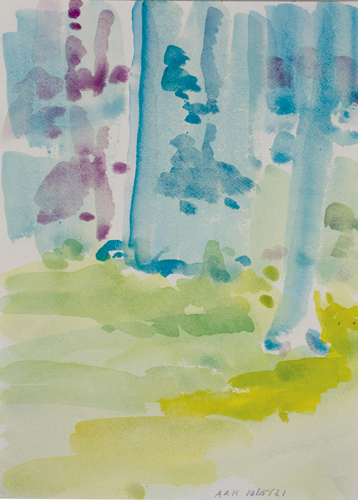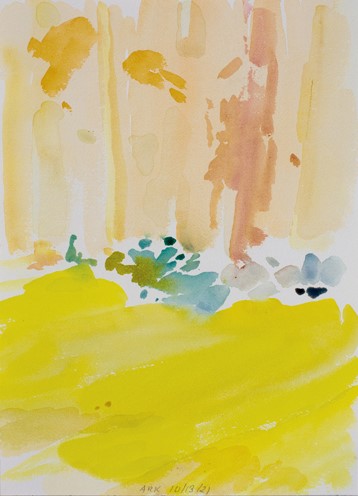La pittrice Rebecca Berman crea personaggi stravaganti e sognanti con occhi espressivi. Goditi il suo portfolio e guarda più opere d’arte su di lei sito web.
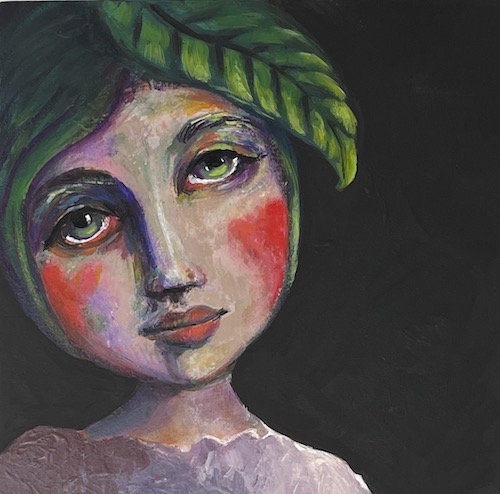
Acrilico “Felce” su tavola, 8″ x 8″
Mi piace una buona storia. Se non capisco il comportamento di qualcuno, invento un retroscena per riempire il vuoto. Invento piccoli aneddoti nella mia testa sulle persone durante la mia giornata.
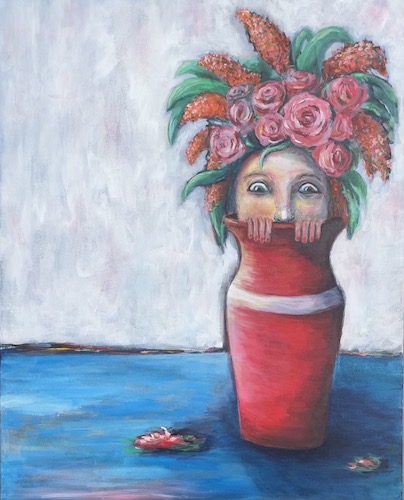
Acrilico “Wallflower, Still Life” su tela, 30″ x 24″
Dopo essere stato interrotto da un guidatore aggressivo, mi dirò: “Ah, probabilmente sta correndo a casa dalla nonna malata o dal suo gatto… o forse dal gatto malato di sua nonna”. Uso queste storie, non solo per divertirmi, ma anche per accendere la mia compassione.
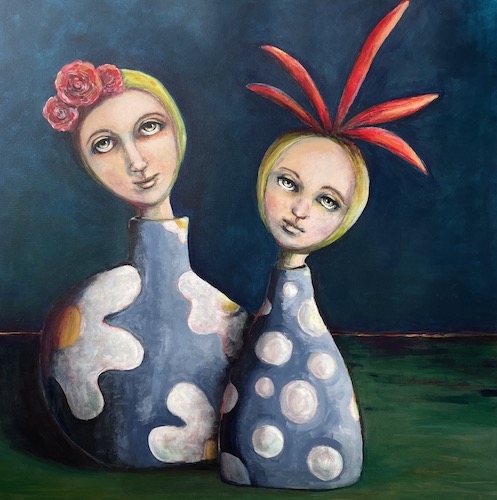
Acrilico su tela “Stesse radici, fioriture diverse”, 36″ x 36″
Anche se sono sciocche, stravaganti o semplicemente sbagliate, queste piccole narrazioni immaginarie mi rendono più facile dare alle persone il beneficio del dubbio. Alla fine mi sento più connesso.
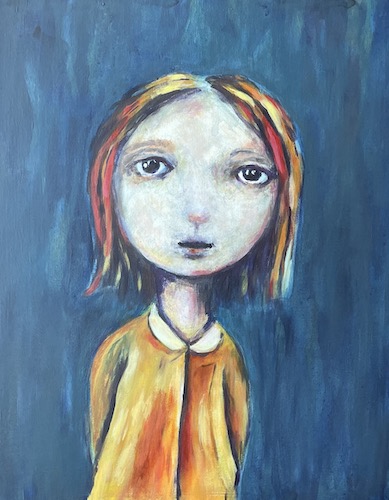
Acrilico su tela “La ragazza con l’impermeabile giallo”, 20″ x 16″
Uso i retroscena per dare vita anche alle figure che dipingo e scolpisco. Questi sono vagamente basati sulle mie esperienze umane e rafforzati dalla mia immaginazione. Creo scenari, emozioni e opinioni per i miei soggetti. Una volta che creo una connessione con le loro storie, la parte di creazione diventa molto più semplice.
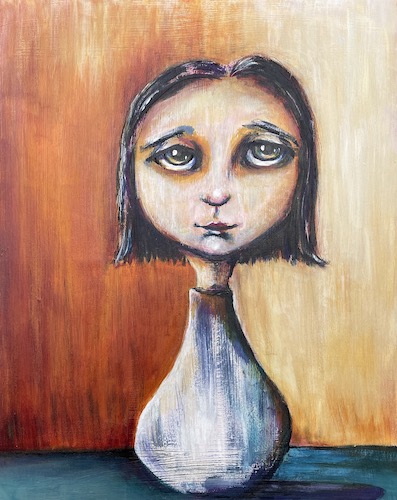
Acrilico “Lucy” su tavola, 14″ x 11″
Proprio come la mia spiegazione inventata sull’autista impaziente, le storie che intreccio nella mia arte non devono essere realistiche per essere riconoscibili. In effetti, adoro distorcere i lineamenti dei miei personaggi: occhi giganti e bocche minuscole fanno frequenti apparizioni. Tuttavia, mi sforzo di farli sentire vero. Quindi gli spettatori possono riconoscere l’umanità dentro di loro.
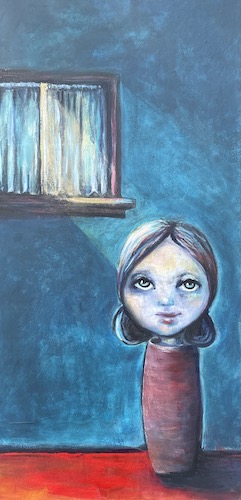
Acrilico “She Chose to Feel the Warmth” su tela, 30″ x 15″
Che io stia dipingendo un pollo adorante o scolpendo una testa che cresce da un vaso, il mio obiettivo è che gli altri si impegnino e alla fine si relazionano con le piccole storie umane al loro interno.
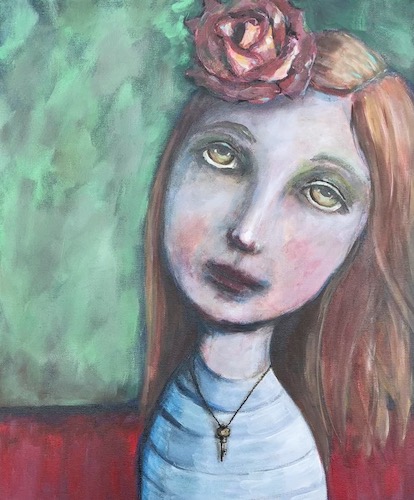
“She Carryed the Key to Her Own Heart” acrilico su tela, 24″ x 20″
Il mio obiettivo non è che dicano “Oh, è carino!” Invece, voglio che riconoscano alcune emozioni e provochino empatia. “Oh, benedici il suo cuore!” o “Oh, mi ricorda mia sorella… la amo semplicemente!”
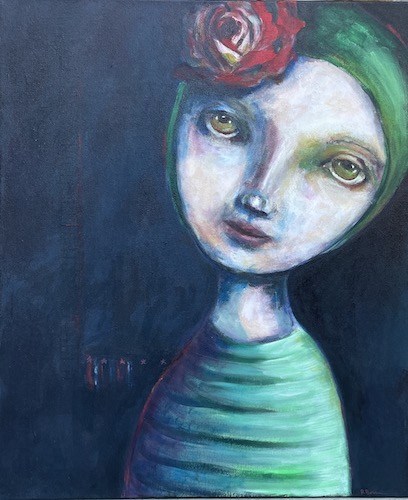
Acrilico “Cuore di Sonora” su tela, 24″ x 20″
Diventare un artista è stato un processo per riscrivere me stesso nella mia storia. Dopo una carriera nel settore sanitario e dell’istruzione, ho scoperto che essere un artista mi ha permesso di apprezzare la mia prospettiva unica e di concentrarmi sulla complessità emotiva degli esseri umani che mi ha sempre affascinato.
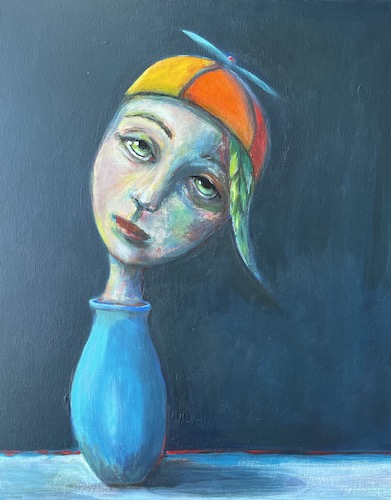
Acrilico “Too Much Fun” su tela, 20″ x 16″
Le nostre vite appaiono così lineari. Eppure, solo con uno sguardo sotto la superficie, vediamo la complessità: le nostre menti e i nostri cuori, a turno, guidano la nave, le nostre storie, reali e immaginarie, che si sovrappongono e si mescolano. La mia arte esplora questi piccoli momenti, ambientati nella rete della complessa esperienza umana.
Una delle cose migliori del dipingere e scolpire piccoli momenti umani è che non rimarrò mai senza materiale. Con gli umani, c’è sempre un retroscena.
L’artista Rebecca Berman ti invita a seguirla Instagram e Facebook.
Vuoi essere sempre aggiornato sugli articoli economici all’avanguardia di Artsy Shark, oltre a funzioni per artisti e un invito alla prossima Call for Artists? Clicca qui sotto per iscriverti alla nostra email bimestrale. Avrai tutte queste opportunità in più e offerte speciali che non puoi trovare da nessun’altra parte!



